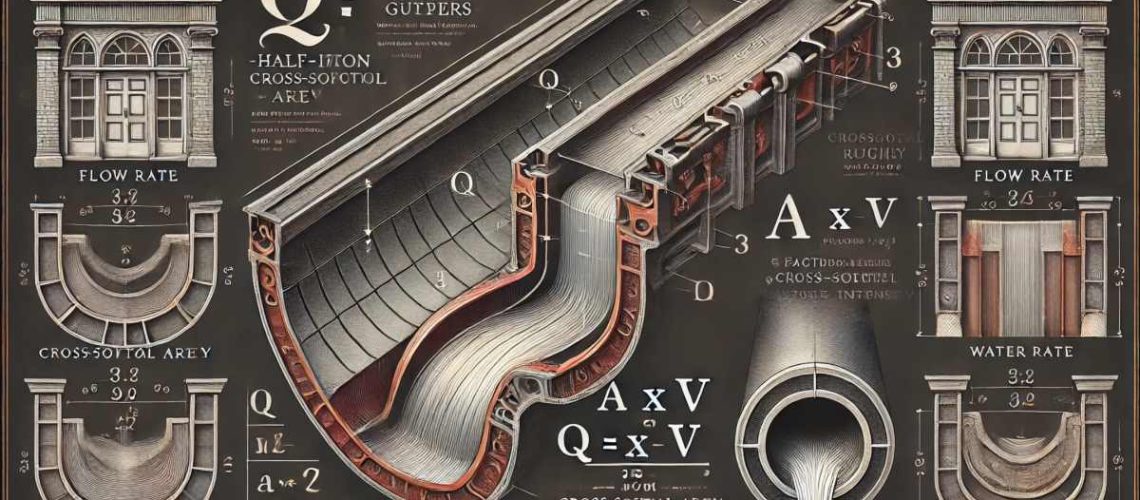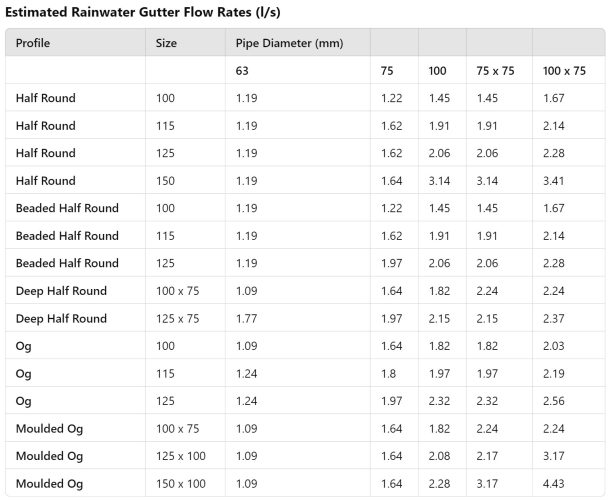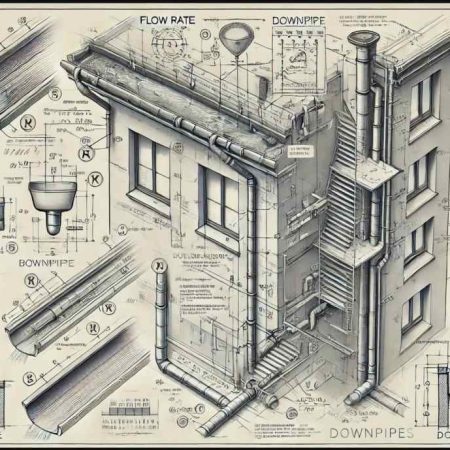


At Tuscan Foundry, we understand the importance of preserving the architectural integrity of period properties. Our cast iron rainwater systems are aesthetically faithful to historical designs and engineered to provide lasting performance. One crucial aspect of rainwater system design, especially with the changing climate and increased rainfall intensity, is accurately calculating flow rates to ensure your gutters and downpipes can handle the water volume. This article will guide you through the process, offering insights and advice to protect your cherished home.
Flow rate refers to the volume of water that can pass through a gutter system within a specific time. An inadequate flow rate can lead to overflowing gutters, water damage to your property’s façade, and even structural issues in the long run. This is particularly relevant today, as climate change contributes to more frequent and intense rainfall events. Historic buildings, often with intricate architectural details and sensitive materials, are particularly vulnerable to such damage.
Several factors influence the flow rate capacity of a cast iron gutter system:

While we always recommend consulting a qualified installer for precise calculations, here’s a simplified approach to understanding the process:

Runoff (litres per second) = Rainfall Intensity (mm/hour) x Roof Area (m²) / 3600
At Tuscan Foundry, we offer a range of cast iron gutter profiles and sizes to suit various needs and architectural styles. Our expert team can assist you with flow rate calculations, product selection, and installation advice to ensure your rainwater system provides optimal performance and safeguards your period property.
Beyond Calculations: The Tuscan Foundry Difference
While accurate calculations are essential, choosing Tuscan Foundry means investing in more than just functionality. Our cast iron rainwater systems are:
Investing in a well-designed cast iron rainwater system is an investment in the long-term preservation of your period property. By carefully considering flow rates and choosing Tuscan Foundry products, you can ensure your home remains protected from the elements, now and for generations.

We invite you to explore our range of cast iron rainwater systems and experience the Tuscan Foundry difference. Our knowledgeable team is always ready to assist you with any queries or provide personalised advice for your project. Let us help you safeguard your heritage with cast iron’s enduring beauty and performance.